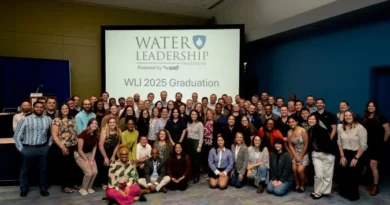Ohio, Once Again, Votes for Infrastructure
Bipartisan support in May 2025 renewed Ohio’s State Capital Improvement Program
In 1987, former state Senator Harry Meshel, a strong supporter of economic development, led a bipartisan effort which included former state Representative Dean Conley, who championed Ohioans’ quality of life. This effort was to amend the Ohio Constitution to allow the state to raise $1.2 billion dollars to be shared with local communities all over Ohio. This vision provided for the origination of a program allowing local governments to receive funds for the rehabilitation of roads, bridges, water and wastewater systems and other physical assets. This major innovation began with a proposal, known as State Issue 2, to create the State Infrastructure Fund.
This fund is the financial source for the State Capital Improvement Program (SCIP) administered by the Ohio Public Works Commission (OPWC). It is supported by periodic amendments to the Ohio Constitution to allow the state to use its general revenues as debt support to issue general obligation bonds. Funds may be awarded as grants or loans. Grants are available for up to 90% for repair and replacement and up to 50% for new and expansion. Loans may serve as a match or pay up to 100% of eligible project costs and are paid back into a revolving loan fund to be reloaned. Terms are up to 30 years but cannot exceed the weighted useful life of the infrastructure. The OPWC director sets the interest rate which is currently 0%.
Each spring the OPWC releases allocations, based on a per capita formula, to 19 statutorily created district integrating committees. These districts are made up of local officials who review, score and rank project applications according to methodologies approved by the OPWC director. The methodologies are based on criteria specified in statute including the infrastructure’s age and condition, importance to health and safety, availability of other funding sources and project readiness. District recommendations are reviewed by the OPWC for eligibility and completeness who then, in turn, creates and administers agreements and pays the OPWC’s percentage share of eligible project costs. Contractors and communities are paid within a few days of completed disbursement requests.
On May 6, 2025, Ohio voters renewed funding for SCIP for the fourth time and, once again, as State Issue 2. The table below provides the renewal history and it’s evident that the program continues to receive substantial voter support. The most recent renewal authorizes $2.5 billion ($250 million annually).
| Ballot Issue History | Date | Amount | Passage Rate |
| Original – Issue 2 | 11/3/87 | $1.2B | 70.8% |
| 1st Renewal – Issue 2* | 11/7/95 | $1.2B | 61.9% |
| 2nd Renewal – Issue 1 ** | 11/8/05 | $1.35B | 54.1% |
| 3rd Renewal – Issue 1 | 5/6/14 | $1.875B | 65.1% |
| 4th Renewal – Issue 2 | 5/6/25 | $2.5B | 67.8% |
* Combined with Ohio Department of Transportation’s increase in bonding authority.
** Combined with other Ohio bond initiatives for Third Frontier and Job-Ready Sites.
The ballot issue drew widespread support from the various local government associations, the construction industry and other sectors including labor, agriculture, transportation and public safety due to the program’s long, proven track record and the benefits of strong infrastructure. The voters got behind the issue for multiple reasons including the provision of necessary funding for infrastructure needs; no tax increase, and, in fact, a reduction of pressures for local taxation, bipartisan support; the program’s lengthy successful history; and the funding of projects in each of Ohio’s 88 counties. Local governments have repeatedly said they cannot afford projects if not for this program. Constructing far fewer projects or deferring needed infrastructure improvements beyond their useful life would result in public safety hazards, health risks and economic damage.
The ballot issue may not re-emerge as “Issue 2” including because ballot issues are now numbered sequentially (up to 500), but it is with great hope that this program continues far into the future. Senator Meshel and Representative Conley never envisioned this program to be a “one and done”. Aging infrastructure is a fact of life. Just as homeowners must eventually replace their roofs or furnaces, so must local governments reconstruct their roads, bridges and water treatment plants. Infrastructure comes with an expiration but when this program prospers, then Ohio’s communities can, too.
There is a strong connection between local government infrastructure, economic development and quality of life. Continuation of this invaluable program means that communities will have financial assistance for a variety of critical infrastructure needs ranging from roads and bridges to clean drinking water for at least another ten years.
For more information about the Ohio Public Works Commission and its programs, visit www.pwc.ohio.gov.
By Linda S. Bailiff. She is the Director of Public Works Commission in Ohio.
This article appeared in our July/ August Issue, Read More.




